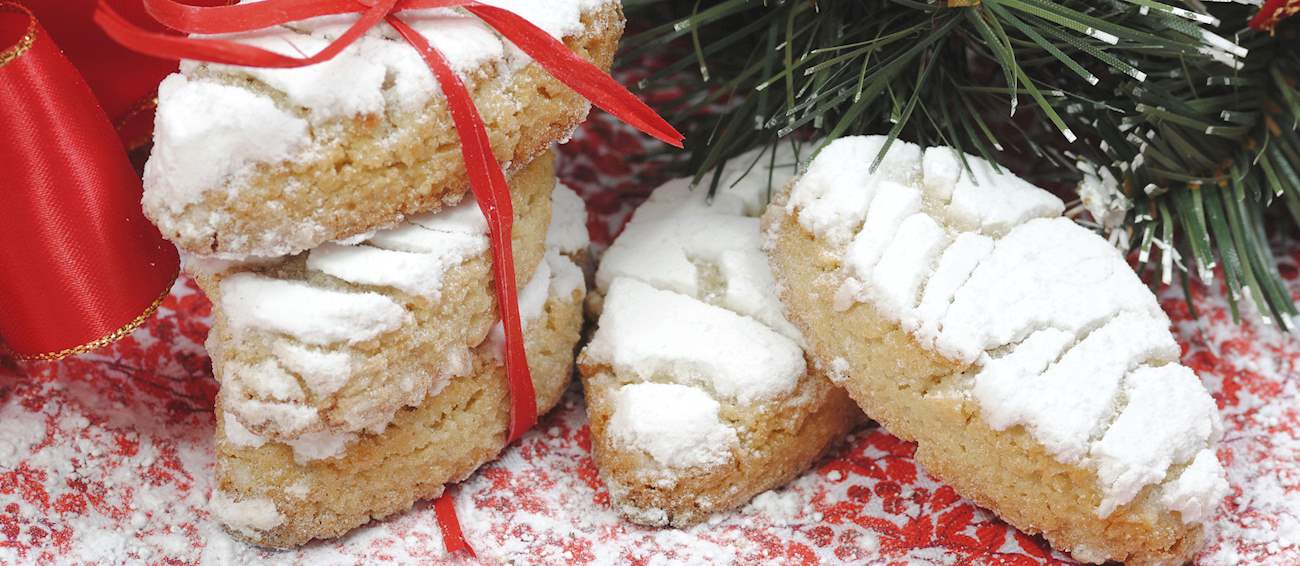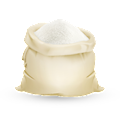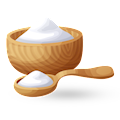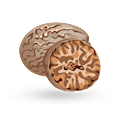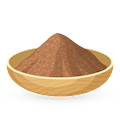These traditional Italian Christmas cookies were originally invented in Siena. They have a soft texture and consist of flour, nuts, candied fruit, and various spices. Originally, cavallucci were prepared without nuts or candied fruit – only flour, sugar, honey, and anise seeds were used.
The name is believed to be a derivation of the word cavallo, meaning horse – this is either a reference to their shape, which is reminiscent to a horse hoof, or because they were imprinted with a tiny horse on top in the past.
MOST ICONIC Cavallucci
View moreMAIN INGREDIENTS
A typical dessert of Sienese cuisine, ricciarelli di Siena are soft almond biscuits whose origins date back to the 14th century. According to a popular legend, they were named after a Sienese nobleman Ricciardetto Della Gherardesca, who brought similar lozenge-shaped Arab sweets to Siena upon his return from the Crusades.
Back then, these cookies were also known as marzapanetti alla Senese or morzelletti, and they were reserved for the lavish banquets and feasts of Tuscan royalty, since almond paste or marzipan was a precious and expensive ingredient sold only in Renaissance apothecaries along with the most exotic spices of the time.
MOST ICONIC Ricciarelli di Siena
View moreThese hard almond biscuits visually resemble tiny slices of bread, or cantellus in Latin, which is how they gained the name cantuccini, though they are also known as biscotti, meaning twice-baked. Cantuccini supposedly originated in the Tuscan city of Prato in the 16th century, and they were even served at the Medici court.
However, according to some historical records, they did not contain any almonds, being similar to the already famed biscuits from Pisa and Genova. Almonds were added to the recipe towards the end of the 19th century, after which Tuscan bakers started using butter and leavening agents to give the cantuccini a longer shelf life and make them suitable for export.
MOST ICONIC Cantuccini Toscani
View moreTasteAtlas food rankings are based on the ratings of the TasteAtlas audience, with a series of mechanisms that recognize real users and that ignore bot, nationalist or local patriotic ratings, and give additional value to the ratings of users that the system recognizes as knowledgeable. TasteAtlas Rankings should not be seen as the final global conclusion about food. Their purpose is to promote excellent local foods, instill pride in traditional dishes, and arouse curiosity about dishes you haven’t tried.
